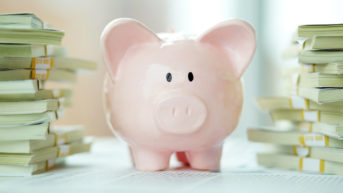The key benefit of investing in TFSAs is that TFSA earnings are tax free. So, the growth you get from your stock investments, including capital gains and dividends, will be tax free.
Well, mostly. I’ll explain the exception with the big mistake you should avoid in TFSAs.
Earning big foreign dividends with big foreign withholding taxes in TFSAs
There’s a tax treaty between the U.S. and Canada. However, if you earn U.S. dividends in a TFSA, there will still be a 15% U.S. withholding tax, because TFSAs aren’t retirement accounts.
So, before buying a big-yield foreign dividend stock in a TFSA, check the withholding tax percentage on the dividend first. The withholding tax will be different for each country. For U.K. stocks, such as Unilever plc (NYSE:UL)(NYSE:UN), there’s apparently no foreign withholding tax (under the NYSE:UL ticker).

You may be all right holding high-growth dividend stocks, such as Visa Inc. (NYSE:V), in a TFSA because investors hold these stocks more for their growth than their dividends. The 15% withholding tax on their dividends is not a lot given the puny yield.
For example, if you buy 50 shares of Visa today, an investment of ~US$5,666, the annual payout would be US$39, but only US$5.85 would be withheld.
Experimenting with your TFSA
Do not experiment with your TFSA. You should test out your investment strategies in a non-registered account before investing in TFSAs. Apply your successful investment strategies in TFSAs, because losses in TFSAs cannot be written off. Moreover, gains and dividends earned in TFSAs aren’t taxed. So, the potential to grow your savings in your TFSAs is limitless.
Over contributing
If you’re at least 18 years old and have a valid social insurance number, you’re eligible to open a TFSA. However, it may not be worth it for non-residents to open one, because they’ll be subject to a 1% tax for each month the contribution stays in the account.
From 2009 to 2012, the TFSA contribution room was $5,000 each year. From 2013 to 2014, it was $5,500 each year. In 2015, it was $10,000. In 2016 and 2017, it was $5,500 each year.
So, if you have never contributed to a TFSA, you could have as much as $52,000 of accumulated contribution room. If you have withdrawn from a TFSA, you can contribute that amount the following calendar year.
Don’t overcontribute, because you’ll be subject to a tax equal to 1% of the highest excess TFSA amount for each month that the excess amount remains in your account.
Contributing to TFSAs before contributing to RRSPs if you’re in a high tax bracket
It makes sense to contribute to RRSPs before contributing to TFSAs if you’re in a high tax bracket, because doing so can lower your tax bracket. After that, you can contribute any excess savings to your TFSA.
Investor takeaway
TFSAs are a good tool to save and invest for your financial goals. However, there are things investors should avoid. For example, beware not to invest in high-yield stocks with foreign withholding taxes in TFSAs.
A TFSA is a decent place to buy Canadian dividend stocks, such as Royal Bank of Canada (TSX:RY)(NYSE:RY), and high-growth stocks, such as Visa, at the right price.








